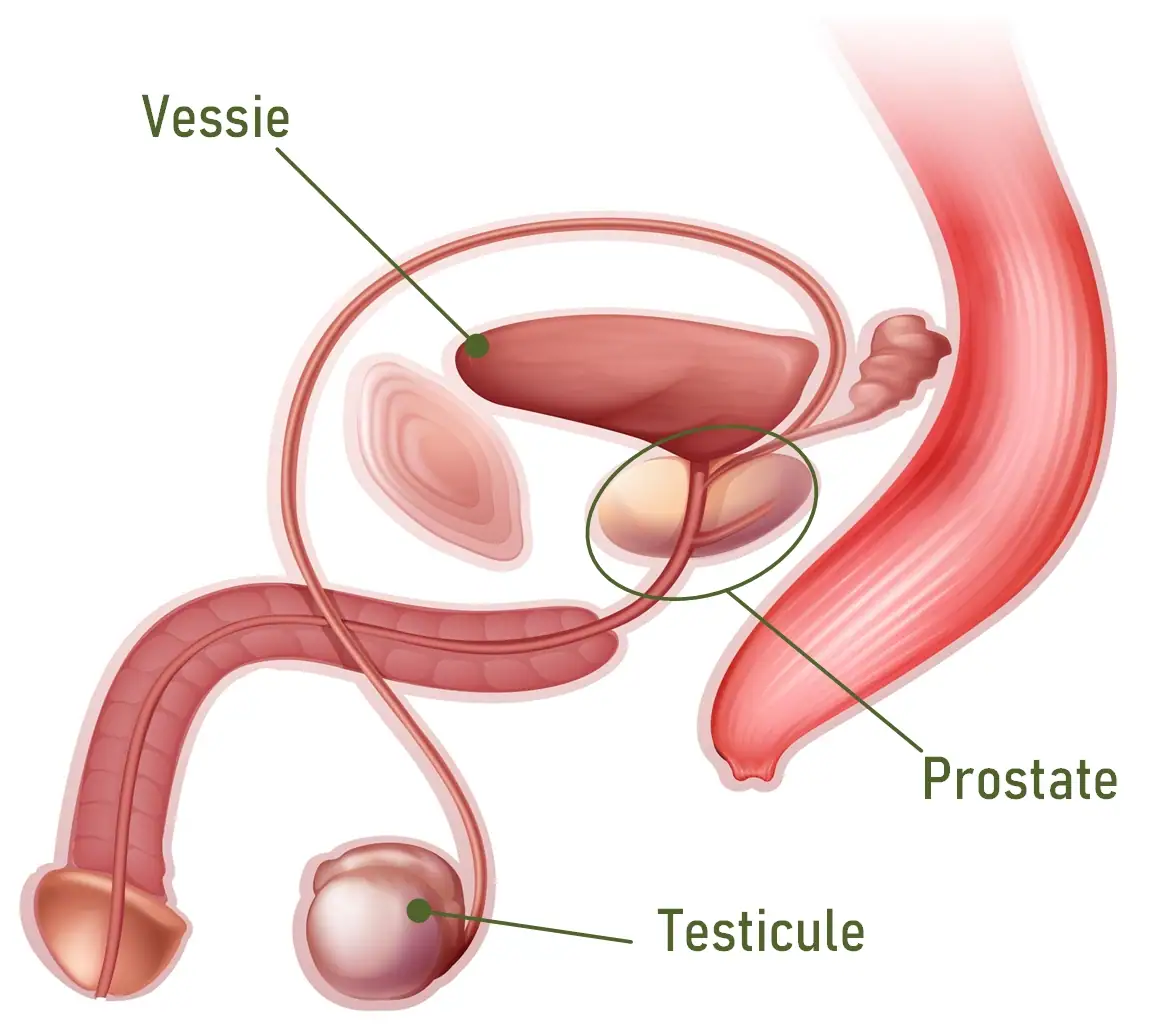Summary :
◉ What is prostatitis ?
Prostatitis is an often painful condition that involves inflammation of the prostate and sometimes the areas around it. It can affect men of all ages.
Prostatitis is a common and often painful condition in which the prostate gland is inflamed, swollen, and tender. It can be caused by a bacterial infection. However, this is not a common cause.
Each type of prostatitis requires different treatment. Your doctor will perform a physical exam, review your symptoms and medical history, and order tests to determine the cause of your symptoms and the proper treatment.

◉ Where is the prostate located ?
Only men have a prostate. It is a nut-shaped gland that is part of the male reproductive system.
It sits below a man's bladder and in front of the rectum. It surrounds the upper part of the tube that drains urine from the bladder (urethra).
◉ Types and causes of prostatitis
Some cases result from a bacterial infection of the prostate and others, more frequently, from a poorly understood combination of non-infectious inflammatory factors. Different types of prostatitis have different causes :
- Acute bacterial prostatitis: This is the least common type of prostatitis, it often starts suddenly and has severe symptoms. It is usually caused by common strains of bacteria such as Escherichia coli, Enterococcus and Proteus. The infection may have spread from other parts of the urinary or reproductive systems.
- Chronic bacterial prostatitis: More common in older men. It is an infection that comes back again and again and is difficult to treat. It usually has the same cause as an acute bacterial infection. This can happen when treatment for an acute infection isn't long enough or doesn't kill all the bacteria.
- Chronic Prostatitis / Chronic Pelvic Pain Syndrome: This is the most common type of prostatitis and often lasts for months. The etiology is poorly understood, several factors (a previous infection, nervous system dysfunction, immune system dysfunction, psychological stress or irregular hormonal activity) may collectively play a role.
- Asymptomatic inflammatory prostatitis: This is often diagnosed when doctors do tests to look for other conditions, such as prostate cancer, or to find the cause of infertility.
◉ Risk factors
You may be more at risk of getting prostatitis in the following situations:
- A recent urinary tract infection (cystitis, pyelonephritis, etc.).
- A catheter, endoscope, or something else placed in your urethra
- Prostate biopsy.
- Enlarged prostate.
- Irritation by chemicals
- A sexually transmitted infection (STI).
- Abnormal anatomy of the urinary tract
- Pelvic floor muscle problem
- Stay motionless for a long time.
- Anal sex
- Injury to the area between the scrotum and the anus
- Having faecal incontinence.
Additional risk factors for chronic prostatitis/chronic pelvic pain syndrome may include:
- Psychological stress and emotional factors
- Nerve damage in the pelvic area due to surgery or trauma
◉ Symptoms of prostatitis
Each type of prostatitis has a range of symptoms that vary depending on the cause and may not be the same for all men.
Symptoms may come on slowly or quickly, and they may get better quickly, or they may last for several months and they may keep recurring (chronic prostatitis).
◉ Acute bacterial prostatitis
The rapidity and severity of onset is usually most pronounced with acute bacterial prostatitis. You might suddenly have :
- Nausea and vomiting
- Fever, Chills
- Burning on urination
- Pain, which may be severe, in or around the base of the penis, testicles, anus, lower abdomen or lower back (pooping may be painful).
- Urinary retention or complete inability to urinate
- Difficulty starting a stream of urine
- Pain when urinating
- A weak or interrupted stream of urine
- Aches
- Cramps in the abdomen or back.
- Feeling generally unwell, sore, sick, and tired.
Note : Acute bacterial prostatitis is a serious disease. If you notice these symptoms, seek immediate medical attention.
◉ Chronic bacterial prostatitis
Symptoms of chronic bacterial prostatitis are similar to those of acute bacterial prostatitis and may persist for several months, but not as severe. Symptoms come and go often. This makes them easy to miss. You might sometimes have:
- Blood in semen
- Blood in urine
- Pain in the genital area and lower back
- Rectal pain
- A 'heavy' feeling behind your scrotum
- Pain after ejaculation
- Problems urinating
◉ Chronic prostatitis / chronic pelvic pain syndrome
It is the most common type of prostatitis. It shares many of the same signs as bacterial prostatitis. The difference is that when the tests are run, no bacteria are present with this type.
The main symptom is pain that lasts more than 3 months in at least one of these parts of the body: penis, scrotum, perineum and lower abdomen. The pain may come and go and come on suddenly or gradually.
Other symptoms may include :
- Pain in ejaculation or urination.
- Symptoms of the lower urinary tract (pollakiuria, urinary urgency, hematuria...)
- Erectile dysfunction
◉ Asymptomatic prostatitis
Men who have this type of prostatitis have an inflamed prostate but no symptoms. Asymptomatic prostatitis requires no treatment, but it can lead to infertility.